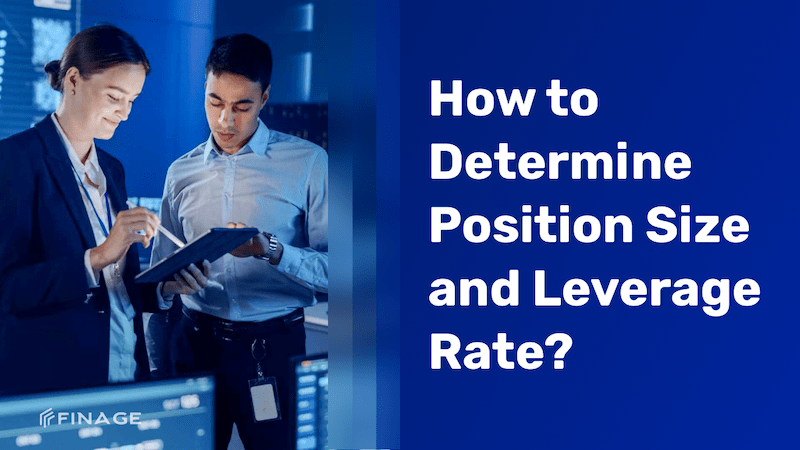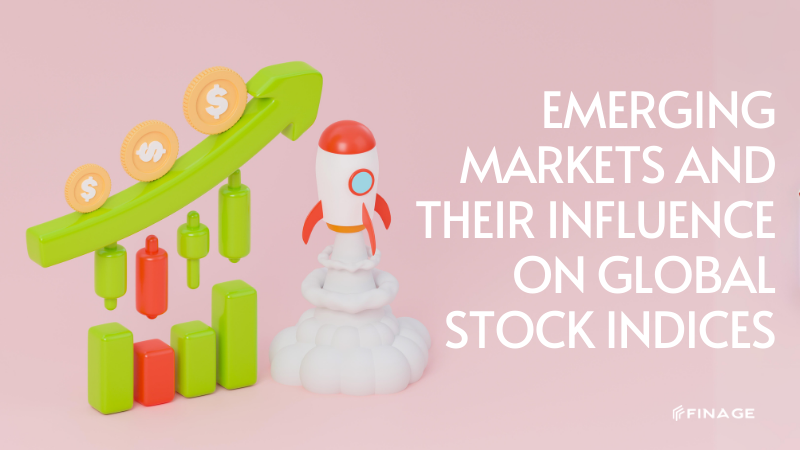Back to Blog
by Finage at March 30, 2022 4 MIN READ
Technical Guides

How to Determine Position Size and Leverage Rate?
The level of leverage ratio affects the performance of company stocks. Leverage ratio also affects the performance of creditors considering lending to the company and fixed income securities, which are debt instruments issued or considered by that company. Leverage ratios are closely related to the profitability of the company. It works in favor of the shareholders when the business cycle and the profitability of the company are good. When profitability increases, their earnings will increase against the amount they have invested. If the company does not distribute dividends and continues to grow, the market price of the stock or the stock market price will increase, increasing the capital gains of its investors.
For example, let the capital structures of two companies of the same size operating in the same sector be respectively as follows: 60 units of long-term liabilities and 40 units of equity for the first company; 30 units of long-term liabilities and 70 units of equity for the other company. Let the net profitability ratios calculated for the balance sheet sizes of both companies (the sum of long-term liabilities and equity) be 20%. In this case, since the balance sheet sizes of both companies are the same, both will have made a profit of 20 units.
The return on equity of the first company with a high leverage ratio is 50% (20/40), while the return on equity of the company with a low leverage ratio is approximately 28.60% (20/70). However, companies with high leverage have a greater risk to their shareholders. If the long-term liabilities are not used efficiently or the performance of the company decreases due to cyclical reasons, the leverage ratio works against the shareholders. This is clearly seen when we convert the profit figure in the above example to the loss figure.
In the event of the company going bankrupt or going into liquidation, the shareholders may not receive anything, as the payments to the foreign funders always come before the shareholders. Therefore, the risk premium of the stocks of companies with high leverage ratio is higher than their counterparts. In other words, investors should expect higher expected returns to invest in such stocks. In other words, it is normal for this type of stock risk premium to be higher.
At the same time, the high leverage ratio is a factor that increases the credit risk for new lenders and those considering lending. Someone with a much higher risk-free rate of return may have to afford to pay a premium, especially if they have traded bonds or are considering issuing a new bond. The high leverage ratio may cause the company to be unable to issue new bonds or borrow from creditors.
Leverage is also available for some derivative transactions. For example, the ratio of the amount of the underlying asset to be traded in options to the option premium is also expressed as leverage. For the option buyer, leverage may mean that he will have the opportunity to trade a certain multiple of the option premium he has paid. If the option he bought is an option in the profit and he exercises the option right at maturity, the profitability ratio will increase depending on the spot price of the underlying asset at the maturity. If the buyer refuses to exercise the option right, then his loss will only be as much as the premium paid. We can think of the option premium as the buyer's equity.
For example, the buyer who wants to make a transaction of 1,000 USD against the Turkish Lira by paying a 1% option premium, will be able to take a position that is 100 times the deposited amount, while the amount that he can lose if he does not exercise his equity and option right will be a maximum of 10 USD.
In option transactions, the seller's risk is always higher than the buyer's due to leverage. If the buyer wants to exercise his right and has to take action against himself according to the spot price in the maturity date, the loss can be multiplied by the premium he has collected.
Final Thoughts
The concept of leverage is also used in futures contracts. Before taking a buy or sell position in futures contracts, traders must deposit a certain amount of collateral for the amount of the underlying asset they want to trade on the relevant exchange. When this amount of collateral is considered as equity for investors, the ratio of the amount of the underlying asset to the amount of collateral is also referred to as leverage. If the price fluctuations go against them and they insist on maintaining their positions, the buyer and the seller may lose more than the amount of the collateral they have deposited, as they may have to deposit more collateral.
However, if their position develops in their favor, they have a chance to earn more than the amount of collateral they have deposited.
We hope that this blog post will be beneficial for you. We will continue to create useful works in order to get inspired by everyone. We are sure that we will achieve splendid things altogether. Keep on following Finage for the best and more.
You can get your Real-Time and Historical Data with Finage free API key.
Build with us today!
Featured Posts

Impact of AI on Forex Trading: Analyzing Advancements & Integration
April 19, 2024

Why Crypto & Blockchain Are So Important in 2024?
April 18, 2024

Emerging Markets and Their Influence on Global Stock Indices
April 17, 2024

Web3 Security Challenges and Solutions
April 16, 2024

Quantum Computing and Its Potential Impact
April 15, 2024
Categories
Forex
Finage Updates
Stocks
Real-Time Data
Finage News
Crypto
ETFs
Indices
Technical Guides
Financial Statements
Excel Plugin
Web3
Tags
Leverage Rate
Position Size
equity
investors
high leverage ratio
long-term liabilities
stock
forex
cryptocurrency
indices
ETFs
data feeds
Join Us
You can test all data feeds today!
Start Free Trial

If you need more information about data feeds, feel free to ask our team.
Request Consultation
Back to Blog
Please note that all data provided under Finage and on this website, including the prices displayed on the ticker and charts pages, are not necessarily real-time or accurate. They are strictly intended for informational purposes and should not be relied upon for investing or trading decisions. Redistribution of the information displayed on or provided by Finage is strictly prohibited. Please be aware that the data types offered are not sourced directly or indirectly from any exchanges, but rather from over-the-counter, peer-to-peer, and market makers. Therefore, the prices may not be accurate and could differ from the actual market prices. We want to emphasize that we are not liable for any trading or investing losses that you may incur. By using the data, charts, or any related information, you accept all responsibility for any risks involved. Finage will not accept any liability for losses or damages arising from the use of our data or related services. By accessing our website or using our services, all users/visitors are deemed to have accepted these conditions.